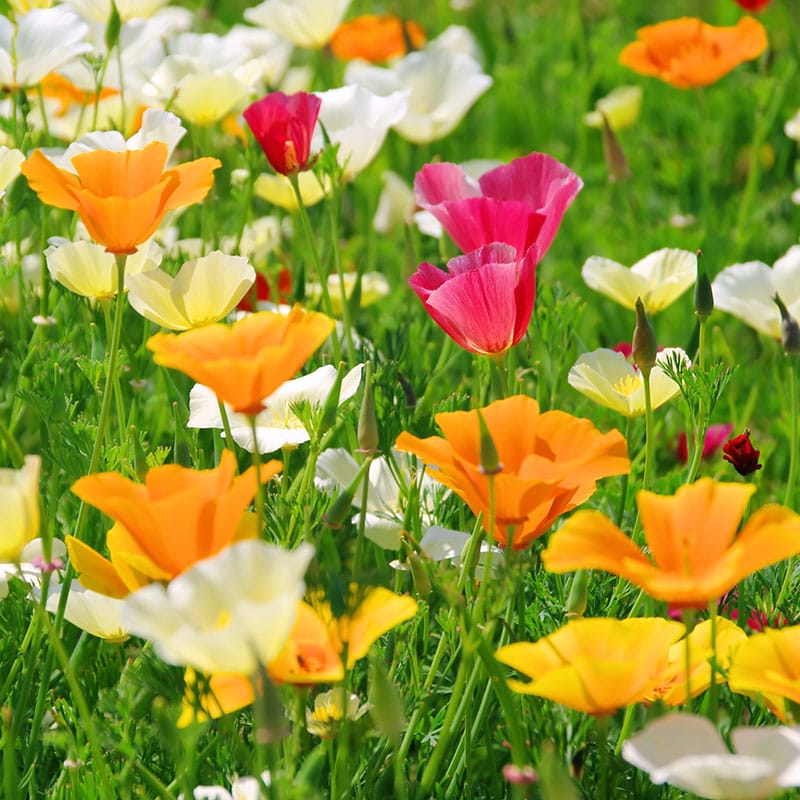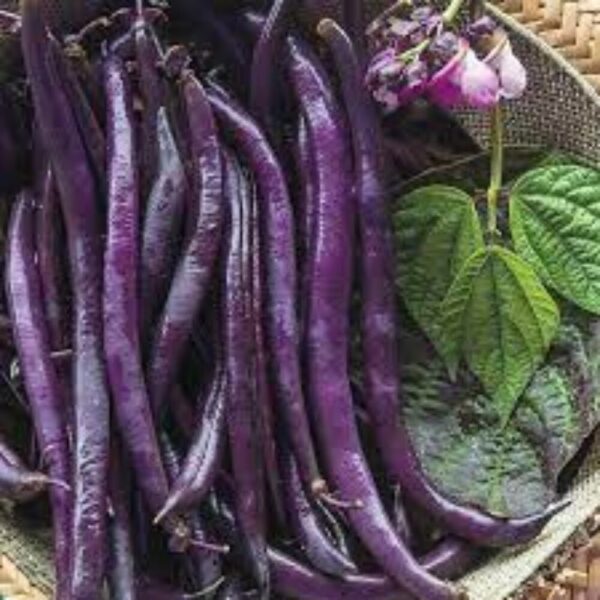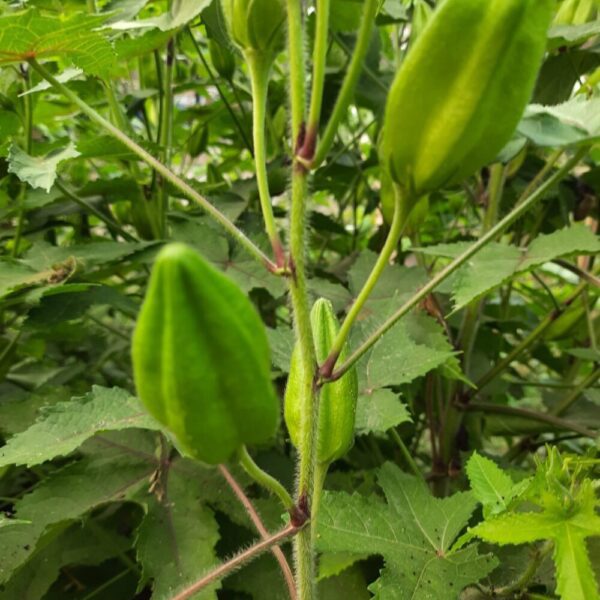Eschscholzia flower mix seeds
Eschscholzia flower mix seeds
Quantity: 50 seeds+
Summary:
- Planting Time: Sow seeds in early spring or fall for the best results.
- Soil: Well-drained, poor to average soil (sand or loam).
- Sunlight: Full sun for at least 6 hours a day.
- Watering: Keep the soil moist until germination, then allow it to dry slightly between waterings.
- Spacing: Thin seedlings to 6–8 inches apart to allow for proper growth.
- Fertilizing: Use minimal fertilizer, especially low-nitrogen options, to avoid excessive foliage.
- Blooming: Eschscholzia will bloom in late spring or early summer.
By following these simple steps, you’ll be rewarded with a beautiful, colorful display of Eschscholzia flowers that will brighten up your garden or landscape throughout the growing season!
Eschscholzia flower mix seeds
Eschscholzia, commonly known as California poppy, is a hardy, beautiful wildflower native to California. The Eschscholzia flower mix typically contains a blend of vibrant colors, including orange, yellow, red, and white, making it a popular choice for adding a burst of color to gardens. These flowers are easy to grow from seeds and are well-suited for various garden settings, especially in dry, sunny spots.
Here’s a step-by-step guide to help you grow Eschscholzia flower mix seeds:
1. Choose the Right Location
- Sunlight: Eschscholzia flowers thrive in full sun. They need at least 6 hours of direct sunlight a day to grow well. The more sun, the better their flowering potential.
- Soil: California poppies prefer well-drained, sandy or loamy soil. They tolerate poor soil conditions and even dry, rocky soils. However, they do not like heavy, wet, or clayey soils. If your soil is heavy, consider amending it with sand or compost to improve drainage.
- pH: They prefer slightly alkaline to neutral soil with a pH of 6.0–8.0.
2. When to Plant
- Outdoors: Plant Eschscholzia flower mix seeds outdoors in early spring (after the last frost date) or in fall for blooms the following spring. These plants are quite frost-tolerant and can survive light frosts.
- Indoors: If you live in a cooler climate, you can start seeds indoors 4-6 weeks before the last frost date, then transplant them outside once the danger of frost has passed.
3. Prepare the Soil
- Soil Preparation: Prepare the soil by loosening it to a depth of about 2-3 inches. Remove any weeds, stones, or debris.
- Amend the Soil (If Needed): While Eschscholzia is very tolerant of poor soils, you can improve the soil structure by adding compost or sand for better drainage and nutrients if you have heavy soil.
4. Sowing the Seeds
- Direct Sowing: Eschscholzia is best sown directly outdoors in the garden. It can be sown in seedbeds, garden borders, or wildflower meadows.
- Sow the seeds directly onto the prepared soil. Scatter the seeds over the surface and lightly press them into the soil with your hand or a flat board. You don’t need to bury them too deeply—just a thin layer of soil or soil contact is enough for them to germinate.
- Spacing: Space the seeds about 6-8 inches apart to allow them to grow into full plants. You can thin them later if necessary.
- Indoor Sowing: If starting indoors, fill seed trays or pots with seed-starting mix. Sprinkle the seeds lightly over the surface and press them down gently. Keep them in a warm, bright location with ample light until transplanting.
5. Watering
- Watering After Sowing: Gently water the seeds after sowing to help them settle in. Keep the soil consistently moist (but not soggy) until germination occurs.
- Post-Germination: After the seeds germinate, water the plants regularly, but allow the soil to dry out slightly between waterings. California poppies are drought-tolerant once established, so they do not require frequent watering once they are growing.
6. Temperature and Germination
- Germination Temperature: Eschscholzia seeds generally germinate best at temperatures between 55–70°F (13–21°C).
- Germination Time: Seeds typically take 14-21 days to germinate. However, they can take up to 4 weeks in cooler conditions.
7. Thinning and Care
- Thin the Seedlings: Once your seedlings have developed their first set of true leaves, thin them out to about 6-8 inches apart to avoid overcrowding and to allow for proper air circulation.
- Mulching: Apply a light layer of mulch (like straw or compost) around the plants to retain moisture and keep the roots cool. Be careful not to mound mulch around the stems, as this can encourage rot.
- Weeding: Keep the area around your seedlings free from weeds, as they can compete for nutrients and water. However, avoid disturbing the roots of young plants.
8. Fertilizing
- Minimal Fertilization: Eschscholzia flowers typically don’t need heavy fertilization. Over-fertilizing can lead to excessive leaf growth at the expense of flowers. If needed, apply a balanced, low-nitrogen fertilizer once a month during the growing season.
- Soil Amendments: If you used compost or other organic matter when preparing the soil, the plants should have enough nutrients.
9. Pruning and Deadheading
- Deadheading: Remove spent blooms regularly to encourage the plant to produce more flowers and to keep the garden tidy. This also helps extend the blooming period.
- Pruning: If the plants become leggy or overly tall, you can trim back the stems to encourage bushier growth. However, avoid cutting back too severely, as this can impact blooming.
10. Enjoy the Blooms
- Flowering Time: Once established, California poppies typically bloom in late spring to early summer, continuing into the warmer months. Some varieties may even bloom in the fall in milder climates.
- Color and Appearance: Eschscholzia flower mix seeds flowers are known for their vivid, cup-shaped petals that come in a range of colors, including orange, yellow, red, and white. These flowers will attract pollinators like bees and butterflies.
12. Seed Saving
- If you want to save seeds for the next season:
- Allow some flowers to mature on the plant.
- Let the seed heads dry completely, then collect the seeds and store them in a cool, dry place.
- Store seeds in paper envelopes or small containers for future planting.
| Weight | 22 g |
|---|---|
| Dimensions | 11 × 8.5 × 11 cm |







Reviews
There are no reviews yet.